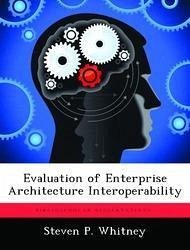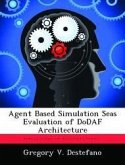Currently, Department of Defense (DoD) policy requires programs to develop architectural products as part of programmatic documentation. Specifically, the Joint Capabilities Integration and Development System (JCIDS) and DoD 5000 series requires architecture products at acquisition milestone decisions. The DoD implements a recommended framework, the Department of Defense Architecture Framework (DoDAF), which describes these architectures. The purpose of this project, suggested by Air Force Space Command, was to examine the value of existing analytical tools in making an interoperability assessment of individual enterprises, as well as assess the touch-points between enterprise architectures. This novel evaluation scheme is based solely on the architecture products, rather than the more common assessment via interviews of subject matter experts or actual system testing. If the architecture products required by DoD are to have any merit, their underlining data must be used by decision makers. Well developed architectures can better aid in capability planning, investment decisions (i.e. spiral upgrades), as well as support proposals for integrated Family of Systems solutions by identifying gaps. The project examines the application of two different assessment tools applied to three different enterprise architectures; these included the DoD's Global Information Grid (GIG), the Air Force C2 Constellation (C2C) and the Combatant Commanders Integrated Command and Control System (CCIC2S). Lastly, some suggested recommendations for improving both the architectural products and tools to aid in interoperability assessments. This work has been selected by scholars as being culturally important, and is part of the knowledge base of civilization as we know it. This work was reproduced from the original artifact, and remains as true to the original work as possible. Therefore, you will see the original copyright references, library stamps (as most of these works have been housed in our most important libraries around the world), and other notations in the work. This work is in the public domain in the United States of America, and possibly other nations. Within the United States, you may freely copy and distribute this work, as no entity (individual or corporate) has a copyright on the body of the work. As a reproduction of a historical artifact, this work may contain missing or blurred pages, poor pictures, errant marks, etc. Scholars believe, and we concur, that this work is important enough to be preserved, reproduced, and made generally available to the public. We appreciate your support of the preservation process, and thank you for being an important part of keeping this knowledge alive and relevant.
Bitte wählen Sie Ihr Anliegen aus.
Rechnungen
Retourenschein anfordern
Bestellstatus
Storno









